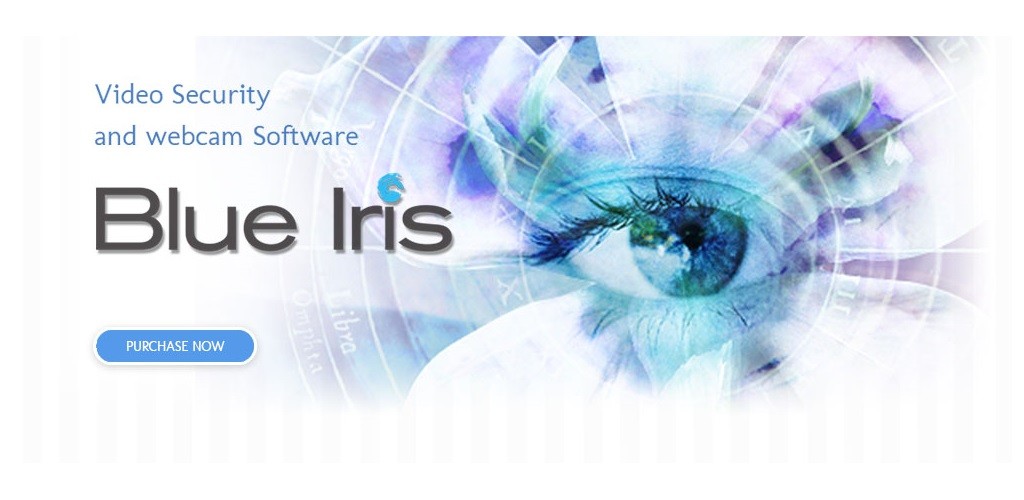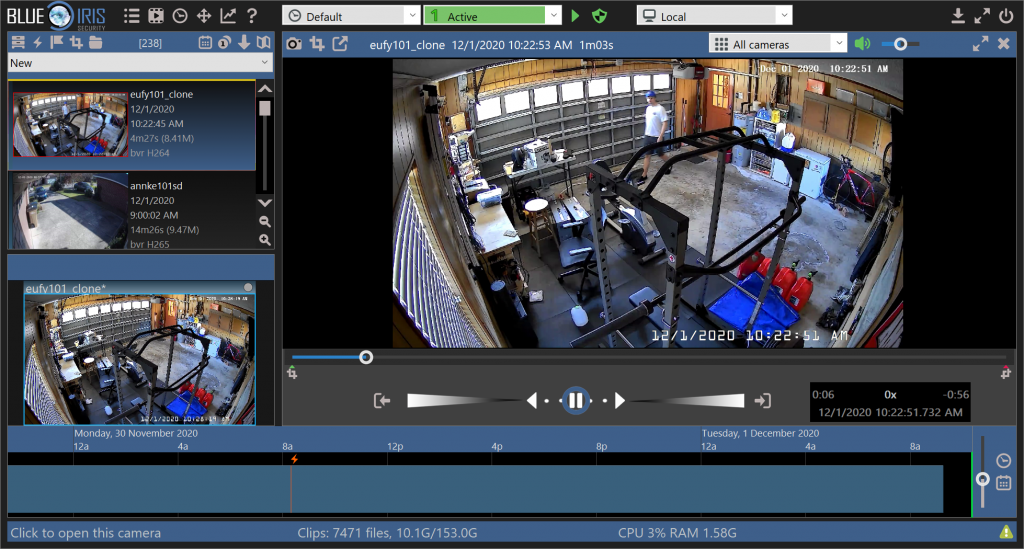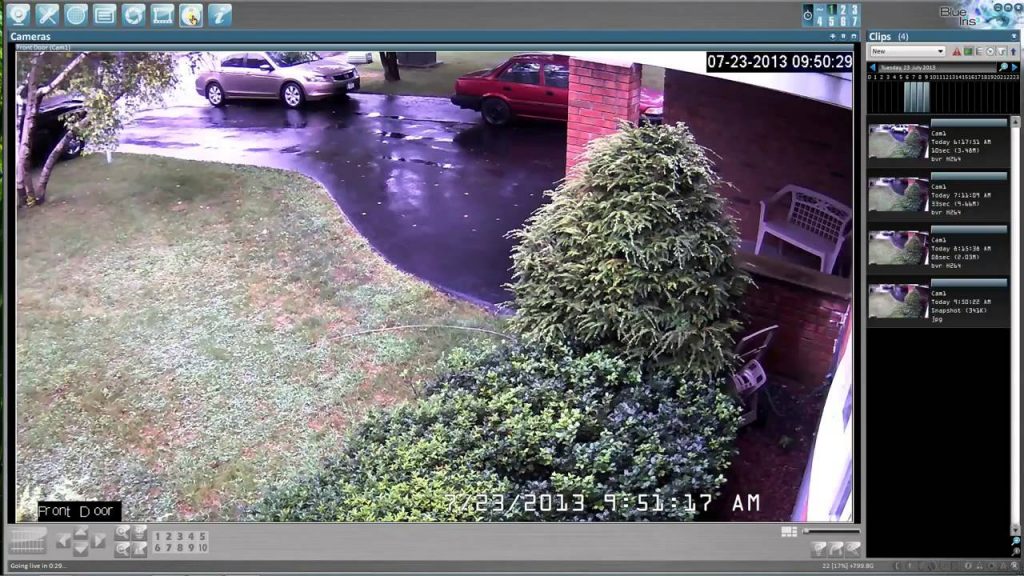What is Blue Iris?
As a software specialist, I have had the opportunity to explore and test out a wide range of software and applications, including Blue Iris. Blue Iris is a versatile and advanced software that allows users to capture jpeg snapshots or movies in standard mp4 file formats from any camera, whether it’s an IP network camera, an analog camera connected to an analog card, or a webcam.
During our trial of Blue Iris, we were impressed by its functionality and ease of use. The software can be installed on a Windows PC desktop and comes with a built-in web server, allowing users to keep an eye on their surroundings from anywhere with an internet connection.
Additionally, users can receive alerts via instant message and even utilize the software’s loudspeaker functionality for added security. Whether you’re a novice or an advanced user, Blue Iris offers a wide range of features to meet your surveillance needs.

Technical characteristics
- Fully customizable interface and user access levels
- Automated event triggers and alerts
- Custom voice alerts and announcements
- Two-way audio support
Features
Advantages
- Easily customize motion detection triggers, alerts and actions
- Centralized interface to all cameras and alerts
- User access levels to limit control
- Robust API and SDK for custom integration
Disadvantages
- Resource demands – Advanced functionality requires decent PC hardware, particularly for large camera networks. This increases costs for some clients.
- Ongoing maintenance – Open-source also means the user bears responsibility for software and camera firmware updates to ensure continuity.
- Privacy concerns – While local storage adds security, some clients prefer to keep data off-site. This requires paid cloud services.

What’s new?
I am excited to announce the new features in Blue Iris! We now support windows media file formats and 64-bit avi for even better video quality. Our advanced DVR devices now have the ability to zoom in on webcams and network IP cams for enhanced security.
The installation process has been made even easier with an overlay feature for valuable MPEG footage. And the voice phone function has been upgraded with automatic redial and the ability to make external voice phone calls for added convenience. These new updates make Blue Iris an even more comprehensive and user-friendly video security system for all your needs.
System Requirements full version
- OS: Windows 10 64-bit
- Processor: Intel Core i5 or AMD Ryzen 5
- Graphics: Nvidia GTX 1660 or AMD RX 590
- VRAM: 4GB
- RAM: 8GB

How to install Blue Iris?
- Locate the downloaded .exe file and double click to run. Follow on-screen instructions.
- Activate License. In Blue Iris software, go to Help > Register. Enter license key when prompted.
- Connect Cameras. Connect IP cameras to your network PoE switch or analog cameras to a capture card.
- Configure Cameras. In Blue Iris, open the Cameras interface. Add each connected camera and adjust settings.
- Set Storage. Go to Global Preferences > Storage Settings. Choose a secondary HDD to save recordings – not system drive.

Activation keys
- LA5XM-7FHUY-X6IGT-H1QHS
- LPJ3L-0APRS-A2HDI-HW8QO
- 89N6P-NZ0FH-HYK7E-381XN
- 1EEKF-4HOMQ-AQZP4-VNYYJ
- TXDDX-RB11I-O0HW3-3YLKN

Alternatives apps
- Kerberos – Another open-source alternative focused on automation and efficiency. Light on system resources for certain use cases.
- Avigilon Control Center – Made by Motorola for extremely high camera counts reaching hundreds. Facial recognition and AI analytics stand out.
- iSpy and WebcamXP – Both good free options for managing just a few USB or IP cameras without advanced needs. Lack scalability of Blue Iris.
- ZoneMinder – Open-source Linux-based option so avoids Windows OS demands. Not as full-featured as Blue Iris but free and expandable.

FAQ
A: Blue Iris supports up to 64 cameras on a single installation depending on system hardware capacity. For large deployments, multi-server setups can be implemented.
A: Key advantages are free lifetime usage, advanced motion analytics, high customization, broad device compatibility and active open-source development.
A: Yes, Blue Iris integrates with most home automation platforms via plugins, has an SDK for custom apps and even triggers for IFTTT. This flexibility is a major plus.
Conclusion
After conducting a thorough analysis of Blue Iris, I have come to the conclusion that this software is a powerful tool for remote management of surveillance cameras. My experience with the product has shown that the code activator and authorization process is seamless, and the serial registration is quick and easy.

While some may attempt to hack the software to obtain a free version, I highly recommend legitimately downloading and installing the latest version with a valid blue iris license. The user interface refresh is smooth and the alert action lists are comprehensive.
In my opinion, Blue Iris is an essential tool for anyone needing to manage their surveillance cameras remotely. With its ability to use motion detection, audio detection, and take screenshots, it has exceeded my expectations. Overall, I believe that Blue Iris is a valuable product for remote surveillance management and I would highly recommend it to others.
![Blue Iris Free Download Crack Full Version with license Key [video management software for mobile and PC] All Soft Review](https://allsoftrereview.com/wp-content/uploads/2024/01/allsoft_logo-302x118.png)